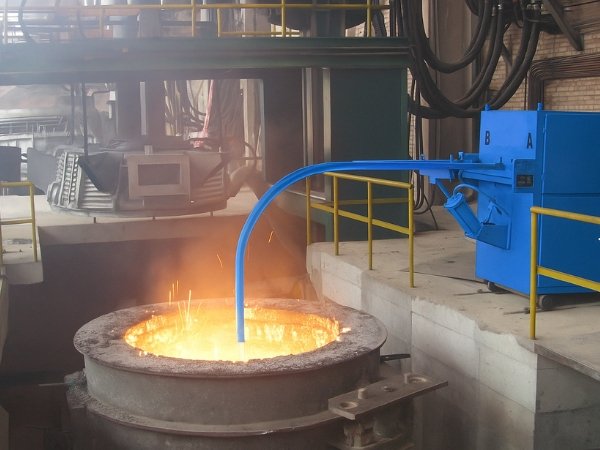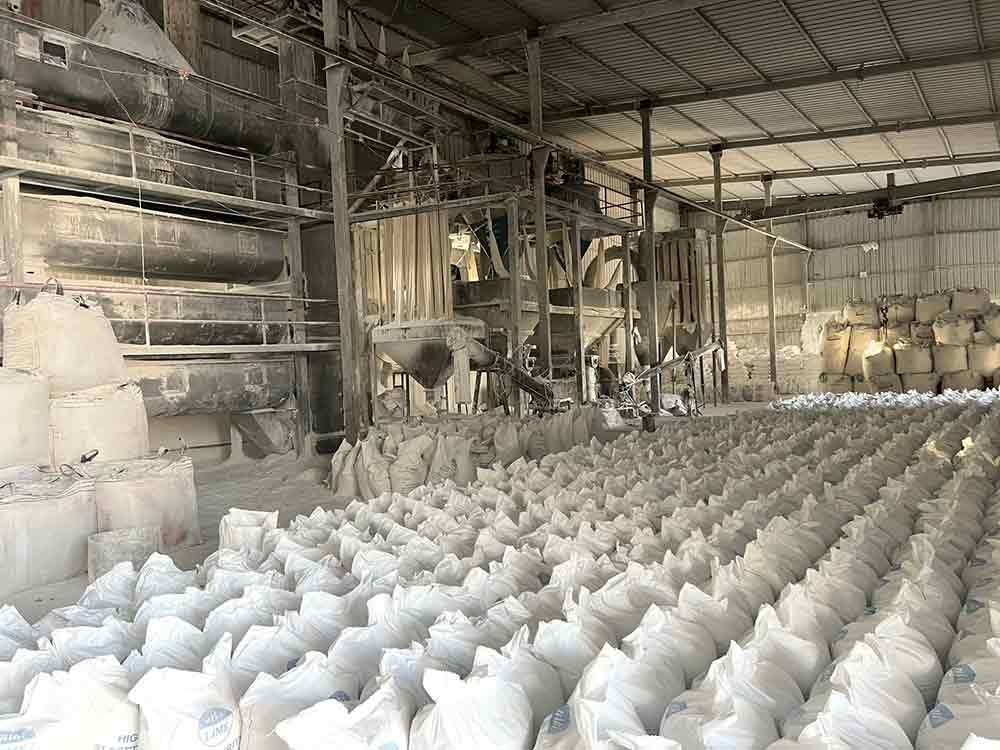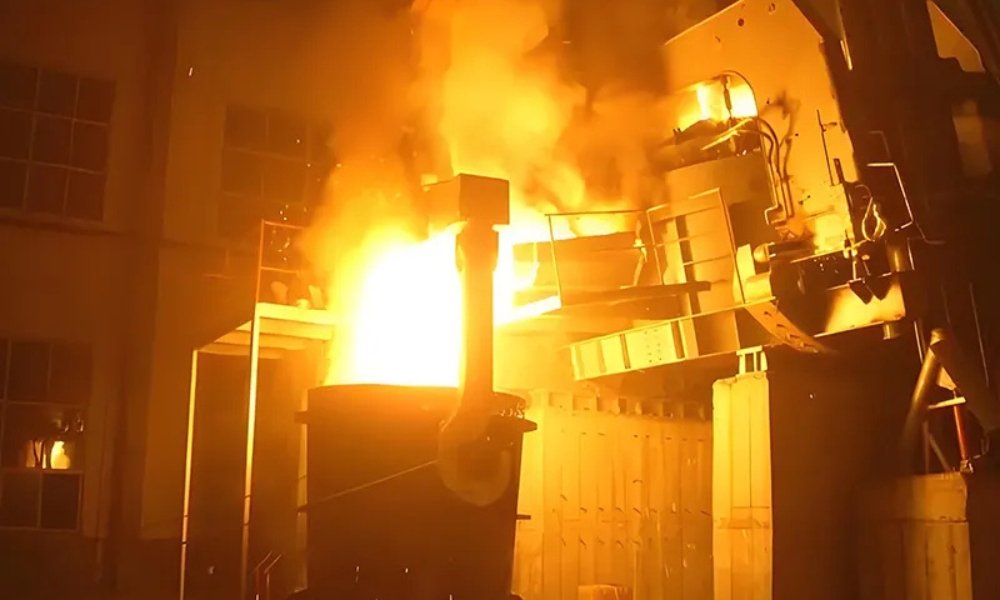Table of Content
- Introduction
- Why Ladle Refining Matters in Steel Production
- Components of a Ladle Refining Furnace
- Functions of Each Component
- Ladle Furnace Process: Steps and Techniques
- Types of Ladle Refining Furnaces
- Key Objectives of Ladle Refining Furnace
- Importance of Lime and Fluxes in LRF
- How Synergy Chemical Industries Supports LRF Operations
- FAQs
- Conclusion
Introduction
Tight quality demands in steelmaking have left no room for shortcuts. Plant engineers and metallurgists constantly aim to control every variable, from chemical composition to inclusion shape and cleanliness. This is where Ladle Refining Furnace operations hold their place between basic oxygen or electric arc furnaces and final casting.
The Ladle Refining Furnace (LRF) gives manufacturers a crucial opportunity to adjust temperature, chemistry, and cleanliness without interrupting production flow. It’s not a luxury it’s an operational necessity, especially for alloyed and low-sulphur steel grades.
Why Ladle Refining Matters in Steel Production
Modern steel grades must meet strict standards for strength, weldability, and corrosion resistance. That precision is nearly impossible without refining after the primary furnace stage.
Ladle refining is not just about heating. It’s where deoxidation, desulphurisation, inclusion modification, and temperature tuning take place all before the metal reaches a casting mould.
Using an LRF helps:
- Reduce rejections caused by non-metallic inclusions
- Meet tighter mechanical specs
- Achieve low sulphur targets
- Control superheat for consistent casting
Whether you’re producing automotive steel, tool steel, or stainless alloys, consistency in each heat matters. LRF operations help meet those expectations.
Components of a Ladle Refining Furnace
Each part of the furnace is built for a specific task whether it’s holding temperature, injecting argon, or accommodating electrode movement. Here’s a look at the main components:
| Component | Description |
| Furnace Shell | The ladle itself, typically lined with refractory bricks to resist erosion |
| Electrode System | Graphite electrodes used for heating the molten steel via electric arcs |
| Roof | Refractory-lined movable roof, provides access for electrodes |
| Slag Door | Allows removal of unwanted slag and metal impurities |
| Argon Purging System | Introduces argon gas for stirring and homogenisation |
| Tapping System | Mechanism for pouring refined steel into the next vessel |
| Hydraulic System | Used to tilt the ladle and control electrode movement |
| Transformer | Provides power to generate arc heating in the furnace |
Functions of Each Component
The true performance of an LRF lies in how well its parts function together.
- Electrodes: Melt and reheat the steel using electrical energy. Arc stability is essential to avoid overheating or cold zones.
- Argon Stirring: Promotes chemical reactions, homogenises temperature, and lifts inclusions into slag.
- Slag Door: Slag contains oxides and sulphides. Controlled removal avoids re-entry of impurities.
- Refractory Lining: Withstands temperatures up to 1800°C. Quality of lining directly affects furnace turnaround.
- Roof: Protects the charge and keeps heat inside. Needs regular maintenance to reduce energy losses.
Each component is critical to the outcome skipping any check increases rework or steel quality failures.
Ladle Furnace Process: Steps and Techniques

Refining in a ladle is a step-wise operation with precise temperature and chemistry controls. Here’s how it usually works:
- Transfer from Primary Furnace
The molten steel is poured into the ladle directly after electric arc or basic oxygen furnace tapping. - Slag Formation
Fluxes like lime and fluorspar are added to form a basic slag layer that absorbs impurities. - Arc Heating
Electrodes are lowered into the ladle and arcing begins to reheat the steel. Heating rate is controlled to avoid excessive wear. - Argon Injection
Gas is injected through porous plugs to stir the bath. This improves mass transfer and assists desulphurisation. - Additive Injection
Alloying agents, deoxidisers, or desulphurising agents are added depending on grade specifications. - Sampling & Analysis
Samples are taken mid-process to check composition. Adjustments are made as required. - Slag Removal
Once refining is complete, slag is removed manually or automatically. - Tapping or Transfer
Refined steel is either sent to a vacuum degasser or to a casting operation directly.
Types of Ladle Refining Furnaces
There are different furnace configurations depending on the scale of production and degree of automation. The common types include:
1. Single Electrode Arm
- Economical
- Used in smaller foundries
- Manual operation mostly
2. Twin Electrode Arm (Three-Phase)
- Standard in integrated steel plants
- Efficient arc heating
- Precise temperature control
3. Stationary vs Tilting Design
- Stationary: Preferred for continuous operations
- Tilting: Useful for easier slag removal
Some LRFs are also paired with vacuum systems for ultra-low carbon steel grades or degassing operations.
Key Objectives of Ladle Refining Furnace
Understanding why LRFs are used helps in planning process parameters effectively. The primary objectives include:
- Temperature Adjustment: Superheat control improves castability.
- Desulphurisation: Lowering sulphur to <0.01% for clean steel production.
- Inclusion Removal: Floating non-metallics into the slag phase.
- Chemical Homogenisation: Ensuring uniform chemistry throughout the ladle.
- Alloy Correction: Fine-tuning elements like Mn, Si, Cr, Ni, or Mo.
Importance of Lime and Fluxes in LRF
Lime plays an essential role in the refining phase, particularly for desulphurisation and slag chemistry control. Here’s how:
- Basicity Control: Lime raises slag basicity, favouring sulphur removal.
- Slag Viscosity: Helps maintain proper flow for impurity capture.
- Inclusion Absorption: Lime-based slags trap oxides and sulphides from steel.
- Refractory Protection: Prevents aggressive attack on ladle walls.
Synergy Chemical Industries supplies high-purity lime, dolomitic fluxes, and other slag conditioners used widely in Indian LRF operations.
How Synergy Chemical Industries Supports LRF Operations
Synergy Chemical Industries works closely with steel manufacturers to support efficient refining through:
- Customised lime blends
- Fast-reacting desulphurisers
- Consistent supply of high-grade fluxes
- Technical assistance for optimal slag formation
Their products are used in over 100+ steel refining units across India, ensuring better metallurgical performance and reduced operational downtime.
FAQs
Q1. What is the purpose of ladle refining furnace operations?
Answer: To refine molten steel by adjusting temperature, removing impurities, and achieving uniform chemical composition before casting.
Q2. How does a ladle furnace work in steelmaking?
Answer: It uses electric arc heating and argon stirring to refine and reheat the steel within a ladle after initial melting.
Q3. What are the key objectives of ladle refining furnace operations?
Answer: Objectives include desulphurisation, temperature control, removal of inclusions, and alloy adjustments.
Q4. Why is lime used in ladle refining furnaces?
Answer: Lime improves slag basicity, assists in sulphur removal, and helps trap inclusions from molten steel.
Q5. What types of ladle furnaces are used in steel plants?
Answer: Steel plants use single-arm, twin-arm, stationary, and tilting ladle furnaces based on process needs and scale.
Q6. What is the role of argon in ladle furnace operations?
Answer: Argon is injected to stir the bath, promote mixing, and lift impurities into the slag layer.
7. How does Synergy Chemical Industries help in LRF operations?
Answer: They provide high-grade lime, fluxes, and support for better slag formation and refining consistency.
8. Can ladle furnaces remove non-metallic inclusions?
Answer: Yes, the refining slag formed in LRFs captures and removes non-metallic inclusions effectively.
Conclusion
For plants aiming to meet demanding quality norms in steel production, the role of Ladle Refining Furnace operations can’t be overlooked. From desulphurisation to alloy tuning, every action inside the ladle contributes directly to the steel’s final properties.
Reliable refining also depends on the quality of fluxes and additives used during the process. That’s where Synergy Chemical Industries brings measurable value by offering consistent, high-reactivity lime and performance additives trusted by steelmakers across India.
For technical consultations or to request a product sample, connect with Synergy Chemical Industries.


